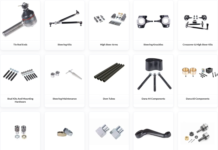The medical device industry offers vast growth potential, but navigating it requires strategic insight. From initial concept to market entry, understanding the journey is crucial for success. This article explores the hurdles and strategies essential for medical device development.
As you venture into the world of medical devices, the path from concept to commercialization can seem daunting. With increasing technological advances and regulatory demands, understanding each stage of development is essential. The industry’s potential for innovation is vast, offering opportunities for those prepared to overcome its challenges.
Research is key in the early stages of development
A successful journey requires a deep understanding of the regulatory strategy for medical devices scene to ensure compliance and market readiness. Embarking on the journey of developing a medical device begins with a robust ideation phase. Here, you must invest time in research and validation, ensuring your idea meets a genuine market need.
This phase sets the foundation for your project, guiding decisions throughout development. Innovation plays a critical role in distinguishing your product in a competitive landscape. By focusing on user-centric design and leveraging cutting-edge technology, you can create a device that not only meets regulatory standards but also fulfills unmet needs in healthcare.
Your approach during these initial stages can determine future success. Collaboration with healthcare professionals provides valuable insights into user needs and pain points, informing product design and functionality. As you refine your concept, consider factors like usability, safety, and efficacy to align with regulatory expectations. This thorough groundwork is indispensable in preparing for the complex phases ahead, especially as you navigate through stringent regulations and compliance requirements.
Conducting thorough market analysis and competitive intelligence during the ideation phase helps identify gaps in existing solutions and potential barriers to entry. This research should encompass not only technical feasibility but also economic viability, including cost-benefit analyses and reimbursement landscapes.
Understanding the competitive environment allows you to position your device strategically and anticipate challenges that similar products have faced. Additionally, early-stage prototyping and proof-of-concept studies can validate your assumptions and provide tangible evidence to attract initial funding. Engaging with potential end-users through surveys, focus groups, and clinical observations ensures that your development efforts remain aligned with actual market demands and clinical workflows.
Understanding regulatory challenges during development
The path to market entry for medical devices is fraught with regulatory hurdles that can derail progress if not addressed early. Understanding these challenges is vital, as they influence every aspect of development from design to testing. Regulatory bodies require comprehensive documentation and evidence of safety and effectiveness before approving new devices. This necessitates an early integration of compliance considerations into your development process, ensuring that all regulatory requirements are met from the outset.
Startups often face significant challenges when it comes to understanding complex regulatory landscapes. Engaging with regulatory experts can provide crucial guidance and prevent costly delays. By embedding regulatory strategy into your workflow from the beginning, you create a seamless transition from development to approval. This proactive approach not only streamlines the approval process but also builds credibility with stakeholders and potential investors.
Navigating the regulatory pathway requires a comprehensive understanding of classification systems, quality management standards, and clinical evaluation requirements specific to your device category. Different regulatory jurisdictions may have varying requirements, making it essential to develop a global regulatory strategy if international markets are part of your commercialization plan. Implementing a robust quality management system early in development, aligned with standards such as ISO 13485, establishes the framework for consistent compliance throughout the product lifecycle.
Risk management processes must be integrated into design controls, ensuring that potential hazards are identified, evaluated, and mitigated systematically. Regular communication with regulatory authorities through pre-submission meetings can clarify expectations and reduce uncertainty, ultimately accelerating the approval timeline while maintaining rigorous safety standards.
Strategies for successful commercialization
Achieving successful commercialization requires strategic planning and execution that considers market dynamics and consumer needs. Building partnerships with industry experts can offer invaluable support and resources that facilitate a smoother transition to market entry. These collaborations can include joint ventures with established companies or alliances with research institutions that have complementary expertise.
As you prepare for market entry, consider developing a comprehensive go-to-market strategy that addresses pricing, distribution, and promotional tactics. Understanding the competitive landscape allows you to position your product effectively and capitalize on market opportunities. Additionally, investing in post-market surveillance ensures ongoing compliance and product refinement based on real-world use data.
Securing adequate funding and establishing strong intellectual property protection are critical components of a successful commercialization strategy. Investors seek evidence of market potential, regulatory progress, and a clear path to profitability, making it essential to develop compelling business cases supported by clinical and economic data. Building relationships with key opinion leaders and early adopters can accelerate market acceptance and provide valuable testimonials that enhance credibility.
Distribution channel selection should consider the unique characteristics of your target market, whether through direct sales, partnerships with established medical device distributors, or digital platforms for remote healthcare solutions. Training programs for healthcare providers ensure proper device utilization and optimize patient outcomes, which in turn drives positive word-of-mouth and repeat business in the competitive medical device marketplace.
Encouragement for startups embracing structured approaches
The journey from concept to commercialization is demanding but rewarding for those who embrace a well-structured approach. Recapping key points highlights the importance of early preparation and strategic partnerships in overcoming industry challenges. You are encouraged to leverage available resources and seek expert guidance throughout development stages.
Understanding industry dynamics equips you with the tools needed to navigate this complex landscape successfully. With dedication and informed decision-making, your startup can contribute innovative solutions to healthcare while meeting all necessary regulations for market entry.
Success in the medical device industry requires persistence, adaptability, and a commitment to continuous learning as regulatory landscapes and market conditions evolve. Building a multidisciplinary team with expertise spanning engineering, clinical affairs, regulatory compliance, and commercial strategy creates a strong foundation for navigating complex challenges.
Startups that prioritize quality, patient safety, and evidence-based development establish reputations that attract strategic partners, investors, and customers. Remember that setbacks and iterations are natural parts of the development process, and each challenge overcome strengthens your organization’s capabilities and resilience.
By maintaining focus on delivering meaningful clinical value while adhering to rigorous regulatory standards, your startup can make lasting contributions to healthcare innovation and improve patient outcomes on a global scale.





























